The Sheikh al-Ra'is Sharaf al-Mulk Abu ‘Ali al-Husayn b. ‘Abd Allah b. al-Hasan b. ‘Ali Ibn Sina, in Latin he is know as Avicenna and his most famous works are those on philosophy and medicine. His philosophical views have engaged the attention of Western thinkers over several centuries, and his books have been among the most important sources in philosophy. In medicine, his encyclpedic book, al-Qanun (The Canon) - Al Qanun Fi Al-Tibb (The Canon of Medicine)- was translated into Latin towards the end of the twelfth century CE, and became a reference source for medical studies in the universities of Europe until the end of the seventeenth century.


Figure 1. Article Image Banner
Note: Composed by Cem Nizamoglu, first published in 1001 Inventions website.
***
  |
|
Figure 2. An imaginary drawing of Ibn Sina (Source: Krueger, H.C.: Avicenna’s poem on medicine. Springfield, Illinois; Charles C Thomas, 1963; p 52a) |
[Ibn Sina, or Avicenna, lived in Hamadan and Jurjan from 980 to 1037 CE, and acquired great fame in mediaeval European medicine.
In al-Qanun, Ibn Sina basically followed the methodical, analytical line originated by al-Razi. AI-Qanun was, however, more broadly conceived than Al-Hawi (the Continens and included all branches of medical science.
According to Desnos, most of the disesaes of the kidneys and bladder can be recognized in the systemic classification of renal diseases and the accounts of bladder diseases given by Ibn Sina in al-Qanun. He was also the first to point out the fact that haematuria may be due to causes outside the urinary system, for example, blood diseases.
Apart from the methodical classification and precise descriptions of aetiological factors and signs in his chapter on urinary disturbances, Ibn Sina pointed out the role of psychological factors in the treatment of certain cases of nocturnal nuresis.
Both Ibn Sina and al-Razi warned against catheterization in the presence of inflammation, as it increases the swelling and pain. To ensure gentle catheterisation, Ibn Sina designed catheters with rounded, firm tips and many side holes from the skin of certain marine and other animals.
The al-Hawi, at-Tasrif and al-Qanun were translated into Latin as early as 1150 CE by Gerard of Cremona and greatly influenced the European Mediaeval schools of medicine well into the eighteenth century.]
From “Paediatric Urology 1000 Years Ago” by Rabie El-Said Abdel-Halim
  |
  |
|
|
Figure 3. Illuminated opening of the first book of the Kitab al-Qanun fi al-tibb (The Canon on Medicine) by Ibn Sina. Undated, probably Iran, beginning of 15th century. (Source) |
Figure 4. First page of the Latin translation of the Canon: Liber Canonis, de Medicinis Cordialibus et Cantica, iam olim quidem a Gerardo Carmonensi ex arabico in latinum conversa (Source) |
[Ibn Sina has attracted the attention of scholars, past and present, who have written books, treatises and articles on him. One of these aspects, however, has not been very widely discussed, namely his views on education.
  |
|
Figure 5. Ibn Sina drawing by A. Suheyl Unver. (Source). |
Although Ibn Sina’s writings on this subject, in comparison with his vast output on other subjects, are in fact considered to be very scarce, we do nonetheless find he deals with the same problems that confront educators today. He speaks about humanity, society, knowledge and ethics. He devoted a treatise entitled ‘Politics’ to education; and he speaks at some length in ‘The Canon’ about the upbringing of infants. Thereby, Ibn Sina represents a lively illustration of the meeting between philosophy and education, for the educator and the philosopher are both faced with the same problems: truth, goodness, the nature of the world, the meaning of knowledge and human nature, and so on. Obviously, Ibn Sina the philosopher has his own views on education. In addition, if we consider that Ibn Sina undertook teaching on a practical level for a considerable length of time, we realize that we have here a thinker whose philosophy was transformed into an educational theory that he himself practiced.]
[The human being, in Ibn Sina’s view, consists of both hidden (sirr) and open (‘alan) elements. Known to us is the perceptible human body with its organs and its cells. ‘Sensory perception stops at its exterior, while anatomy (dissection) enables us to learn about the interior; the hidden part consists of the powers of its mind. These mental powers motivate the human being, and cause it to carry out its various activities and behave as a human being’. To Ibn Sina, the human is a tangible body on the outside, revealed within by means of anatomy —as we see in his books, such as Al-Qanun (The Canon)— and we do not find any difficulty today in accepting this. We still have to look at the mental powers or faculties that motivate this body.]
[This lasts from the third to the fifth year, at the time when ‘the child’s body strengthens, his tongue is free, and he is ready for instruction, and his hearing is attentive’. In ‘The Canon’, he defines the start of the sixth year as the end of that stage, whereupon he enters ‘the stage of primary teaching’. Ibn Sina says: ‘And when he has reached the age of 6 years, he should be brought to the tutor and the teacher’. We see Ibn Sina not concerned here with any specific kind of teaching, but merely with creating a happy childhood as regards physical, mental and moral health.]
From “Ibn Sina on Education” by Abd Al-Rahman Al Naqib
  |
| Figure 6. Commemorative medal issued by the UNESCO in 1980 to mark the 1000th birth anniversary of Ibn Sina. The obverse depicts a scene showing Avicenna surrounded by his disciples, inspired by a miniature in a 17th-century Turkish manuscript; whilst on the reverse is a phrase by Avicenna in Arabic and Latin: “Cooperate for the well-being of the body and the survival of the human species” (Source). The UNESCO established the Avicenna Prize for Ethics in Science in 2002 (see brochure: Avicenna and the ethics of science and technology today, UNESCO, 2004). |
[Were you aware that in the Medieval Islamic world, celebrated scientists such as Ibn Sina used to relay their teachings through poetry? Poems structure and rhythm aided the process of transmitting and memorising scientific and medical knowledge passed from teacher to student and rest of society. This article explores Ibn Sina’s (poem) Al-Urjuzah Fi Al-Tibb which consists of 1326 meticulously classified verses, and is considered as a poetic summary of his encyclopaedic textbook, “The Canon of Medicine”. Its popularity was widespread in the East and later in Europe through Gerard of Cremona’s translation. As a result, it was said to be one of the most famous medical treatises in Europe, widely used in the universities of Salerno, Montpellier, Bologna and Paris up until the 17th century.]
Symptoms are obtained through physical examination of the body at certain moments
There are some visible ones such as jaundice and oedema
There are some perceptible to the ear such as gurgling of the abdomen in dropsy
The foul odour strikes at the sense of smell; for example that of purulent ulcers
There are some accessible to taste such as the acidity of the mouth
Touch recognizes certain ones; the firmness of cancer
From “The role of Ibn Sina (Avicenna)’s Medical Poem…” by Rabie El-Said Abdel-Halim


Figure 7. The title page of a Latin Edition of Ibn Sina’s “Canon of Medicine” together with two of his other works; Cardiac Medicines and the Medical Poem (the Cantica Avicennae) published in 1562. The page on the right is page 1082; the beginning of the Cantica section. Courtesy of Google ebooks.
[The seventh and last art mentioned in the fourth book of the Canon is assigned to the topic of “zina” (“ziynet” in Turkish), that is physical appearance. It consists of four articles. Although the term “zina” calls to mind ornament and ornamentation, when we take a look at the text in the Canon, we may observe that it deals with appearance. That is to say the hair and body care; as well as skin diseases and their treatment. What is more, it also refers to subjects such as obesity and emaciation that affect the appearance, and preventive methods and measures for all of these are discussed.
This article is based on the Turkish version of the Canon. It is important to note however, Mustafa b. Ahmed b. Huseyin of Tokat, who translated it into Turkish, in the 18th century, often used medical Arabic terminology and some idioms that may not be found in most contemporary Ottoman dictionaries. It is a literal translation, yet most of the terms of Arabic origin that are found in it have different meanings from those of today. For this reason, in order to comprehend thoroughly the medicine of Ibn Sina, we must first perform an exhaustive study of the meanings of the medical terms used in the medical literature of the period. Only after this may we wholly understand the old medical texts. If we cannot aptly comment on the theories regarding the etymology of illnesses or, in other terms, the “philosophy of medicine”, I believe that it will be impossible to thoroughly comprehend ancient medicine.]
From “Beauty, Hair and Body Care in the Canon of Ibn Sina” by Nil Sari
  |
  |
|
|
Figure 8: An illustrated page of theCanon in a Hebrew translation. The miniatures shown here are the three basic stages of a physician’s visit with a patient: the examination of the patient, the consultation with attendants, and possibly a written prescription or treatment procedure. (Source). |
Figure 9. Page from an illuminated manuscript of the Latin translation of the Canon of Medicine by Ibn Sina (Source). |
And many more resources can be found in Muslim Heritage related to the Ibn Sina’s The Canon of Medicine:
“Despite a general assessment favouring al-Rāzī’s medical contributions, many physicians historically preferred Avicenna for his organization and clarity. Indeed, his influence over Europe’s great medical schools extended well into the early modern period. There The Canon of Medicine (Al-Qānūn fī al-ṭibb) became the preeminent source, rather than al-Rāzī’s Kitāb al-ḥāwī (Comprehensive Book).”
  |
  |
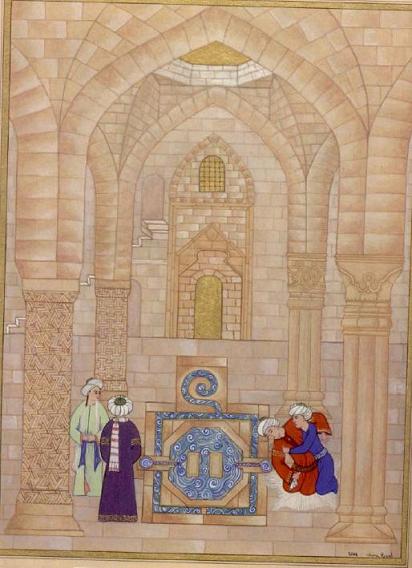  |
||
|
Figure 10. The drawing of Ibn Sina on a Libyan stamp. |
Figure 11. The drawing of Ibn Sina on a Polish stamp. | Figure 12. Dar al-Shifa (Hospital) and patients inside |


Figure 13. Inside image of the Canon of Medicine book (Image Source)
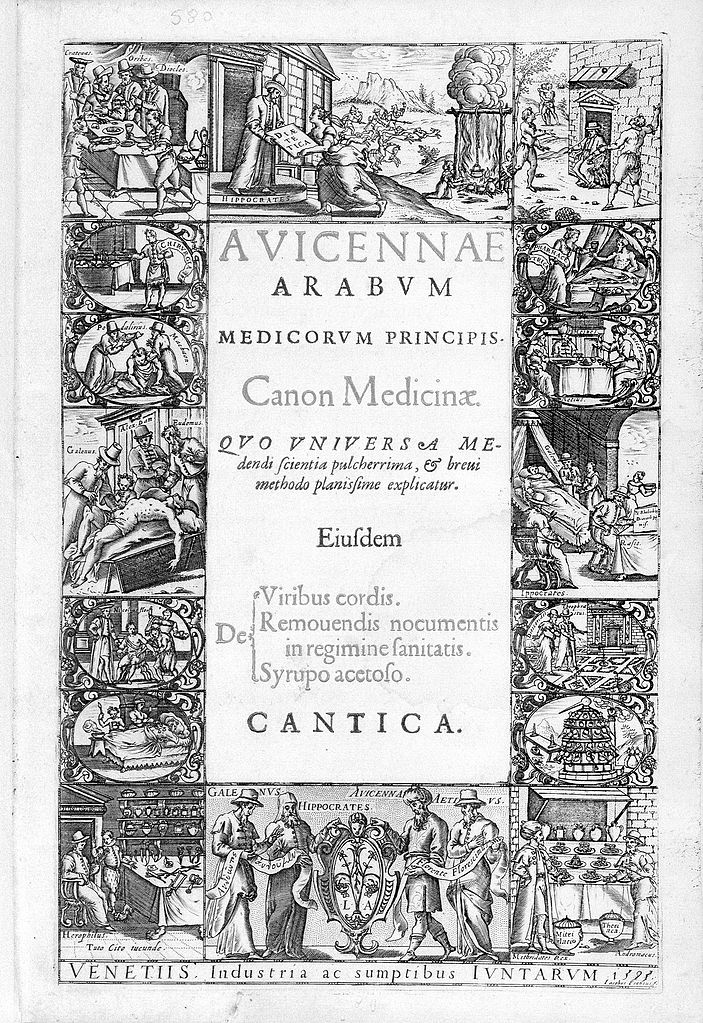

Figure 14. Frontispiece of the Latin Version of the Canon of Medicine, printed in Venice in 1595 (from, Il Canon medicinae di Avicenna nella tradizione ebraica: Le miniature del manoscritto 2197 della Biblioteca Universitaria di Bologna. A cura di Giuliano Tamani. Padova; Editoriale Programma, 1988; p 21. [italian]).


Figure 15. Persian version of The Canon of Medicine located at tomb of Avicenna in Hamedan (Source)


Figure 16. Avicenna, Liber canonis medicine. These woodcut illustrations show authors of classical medical and scientific texts in two vertical columns. In scenes below, physicans appear to be helping patients and instructing others in how to plant and gather herbs. (Source)
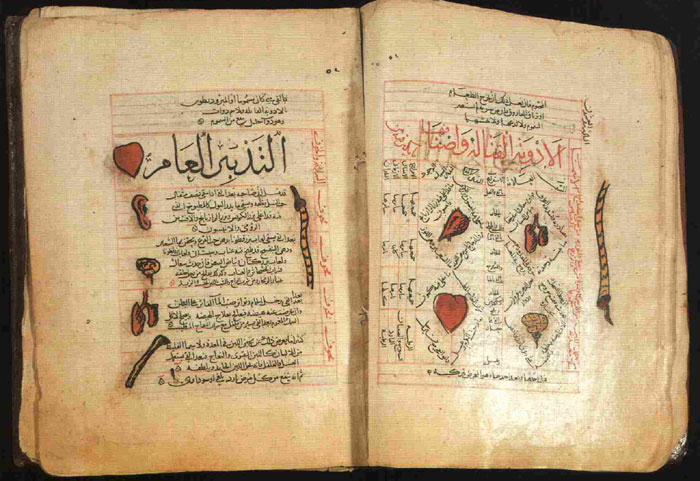

Figure 17. Folios from Ibn Sina’s celebrated work AI-Qanun fit-tibb, known as The Canon of Medicine in Europe. It was translated into Latin in the 13th century and served as the Principal textbook for medical students at several European universities until the 18th century (Source)
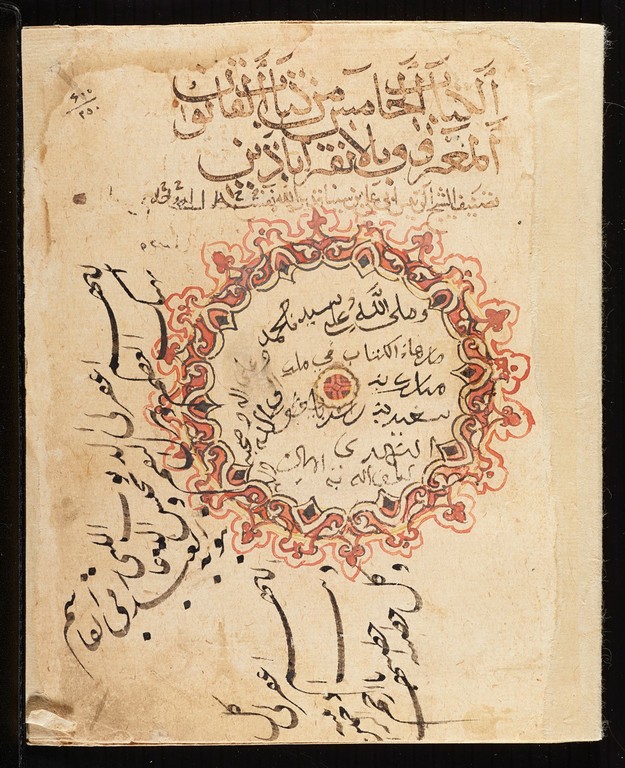

Figure 18. Qanun [Fi’l-Tibb] (Canon [of Medicine]), Volume 5 (Source)


Figure 19. Avicenna: reduction techniques for spinal deformities, 1556 edition, “The Canon of Medicine”
Illustration from the 1556 edition of Iranian physician Avicenna’s The Canon of Medicine, a translation by medieval scholar Gerard of Cremona. Avicenna treated spinal deformities using the reduction techniques introduced by Greek physician Hippocrates. Reduction involved the use of pressure and traction to correct bone and joint deformities. (Source)


Figure 20. Ibn Sina, Kitab al-Qanun fi al-tibb, Rome: Medici Press, 1593. (Source)
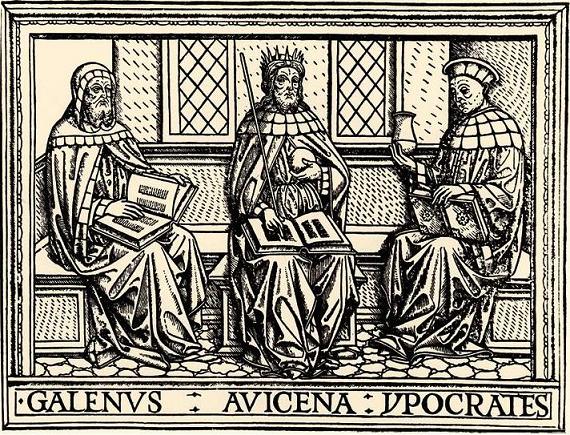

Figure 21. Galen, Ibn Sina, and Hippocrates, the three authorities on medical theory and practice in a woodcut from an early 15th-century Latin medical book. (Source).
4.6 / 5. Votes 202
No votes so far! Be the first to rate this post.
Muslim Heritage:
Send us your e-mail address to be informed about our work.
This Website MuslimHeritage.com is owned by FSTC Ltd and managed by the Foundation for Science, Technology and Civilisation, UK (FSTCUK), a British charity number 1158509.
© Copyright FSTC Ltd 2002-2020. All Rights Reserved.
